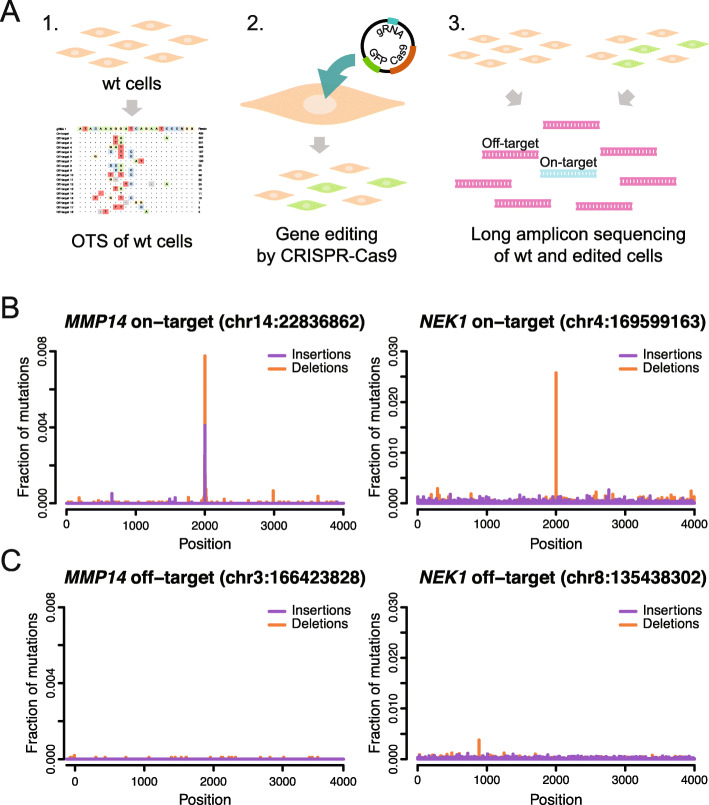Fig. 6.
Analysis of on- and off-target editing in CRISPR-Cas9 edited human cells. a Overview of experiment to examine genome editing at on- and off-target sites in cells. In the first step, OTS is performed on wild-type (wt) DNA to identify potential off-target sites for a specific gRNA. Secondly, CRISPR-Cas9 genome editing is performed using the same gRNA to generate a population of cells where some of them have been successfully edited (in green). In the third and final step, PCR primers are designed at the on- and off-target sites and long amplicon SMRT sequencing is performed both in the wt DNA as well as in the edited DNA. By analyzing and comparing the resulting amplicon reads for edited and wild-type DNA, it is possible to determine whether unintended genome editing occurs both at the on-target site as well as at the off-target sites. b The plots show how insertions and deletion mutations are distributed in a 4-kb window surrounding the Cas9 on-target cleavage sites for MMP14 (left) and NEK1 (right). In each plot, the y-axis shows the percentages of reads from the edited fibroblast cells that contain a start position for an indel, subtracted by the same indel percentages from the wild-type fibroblast cells. In this way, the background distribution of indel mutations is corrected for. c Similar plots as above, but instead for an off-target site for MMP14 (left) and NEK1 (right). No overrepresentation of insertion or deletion mutations are found at the off-target Cas9 cleavage sites

